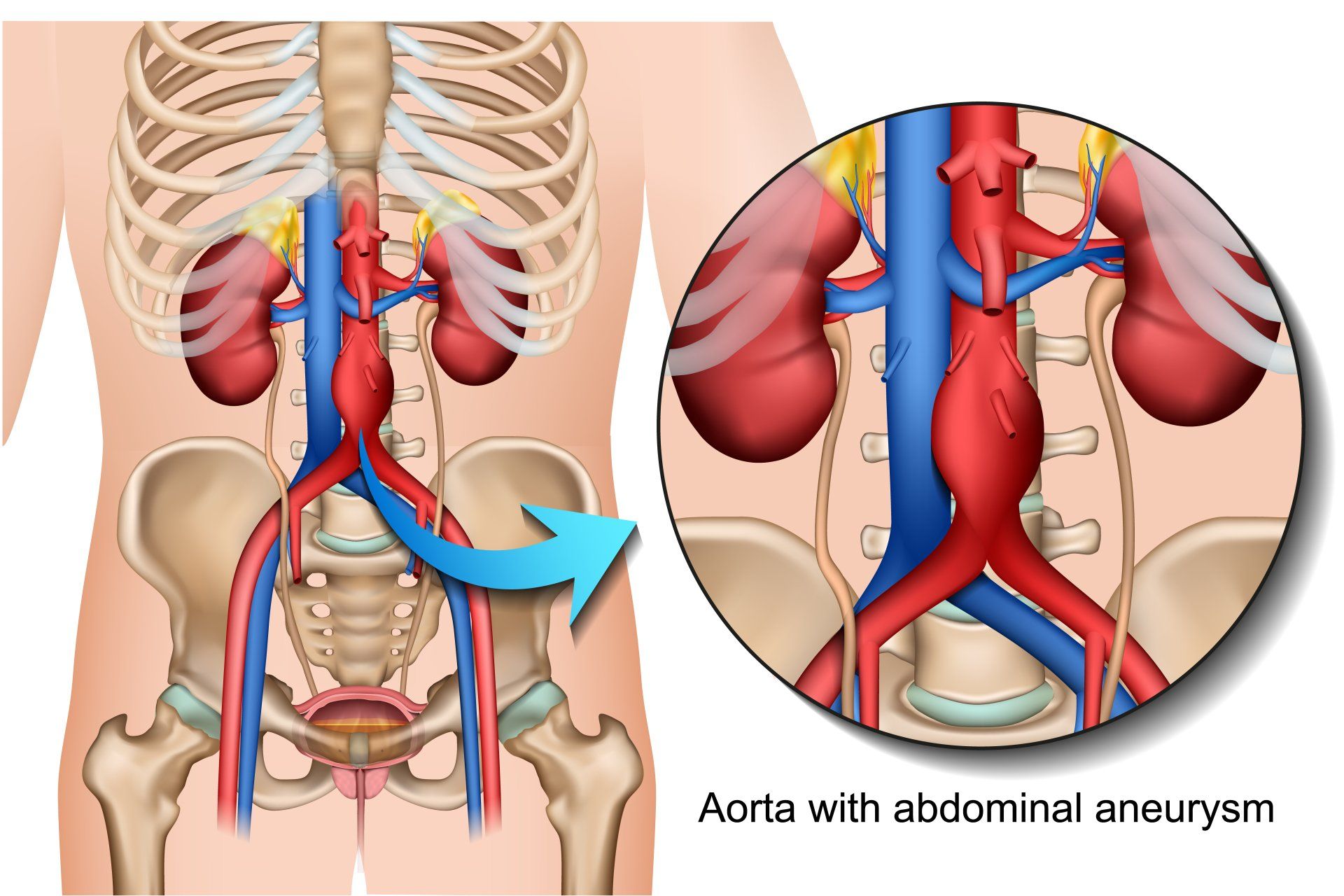Abdominal Aortic Aneurysm (AAA)

An aneurysm occurs when the wall of an artery is weakened over your life and expands due to the blood pressure on the weakened artery wall. The larger the aneurysm becomes, the higher the risk of rupture, just like a balloon that is being blown up that eventually pops.
An abdominal aortic aneurysm (AAA) is an aneurysm of the main artery in your belly that carries the blood to your abdominal organs and legs.
Risk factors for AAA include a personal or family history of aneurysms, high blood pressure (HTN), smoking, and high cholesterol.
Symptoms may include pulsating feeling in the belly, generalized pain in the belly not associated with eating, or acute onset of severe abdominal or back pain that may radiate to the groin.
Unfortunately, most people with AAA don't have symptoms. They don't realize they have an abdominal aortic aneurysm until it ruptures. Most people die if their AAA ruptures.
It is therefore important to be screened for AAA. This includes a thorough history (including risk factors and family history), physical exam, and possibly an ultrasound or CT scan.


